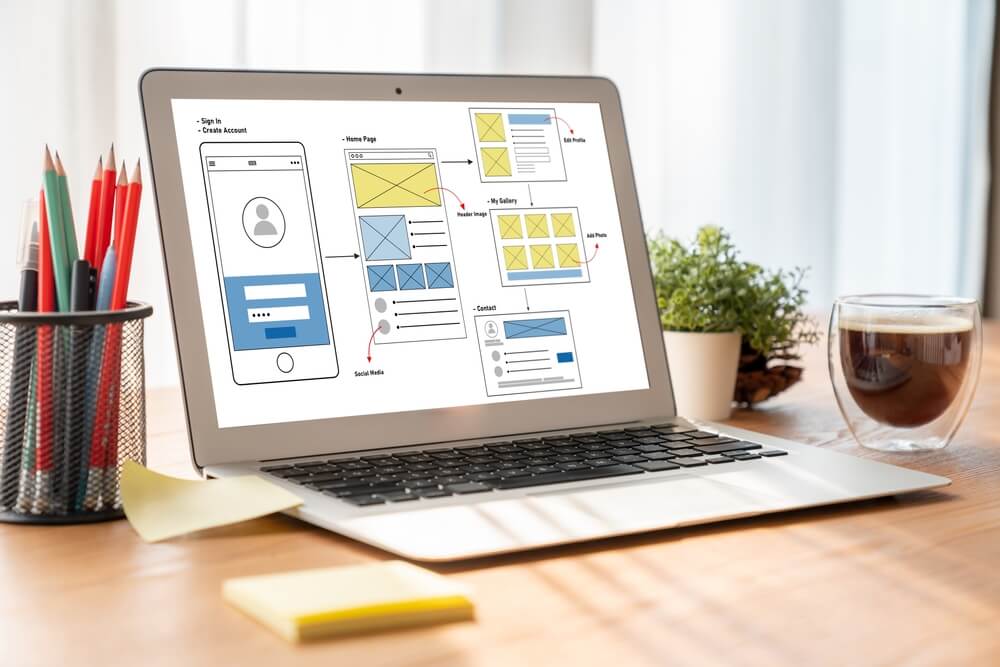
How To Create User Personas: First Step of Great UX Design
Understanding your customers is always the first step in every marketing campaign. User personas help marketers make better and more informed decisions based on user needs, behaviors, and buying preferences.
It also holds true for creating great websites and apps. An expert UX agency prioritizes user persona creation to get the best results and provide the best experiences for your customers.
Create the best and most accurate user personas for your business using this step-by-step guide:
- Define your target audience.
- Gather data.
- Identify patterns and themes.
- Create persona profiles.
- Add visuals.
- Share and utilize.
- Keep user personas updated.
Let’s go!
To learn how Digital Authority Partners can create a standout website for you, watch this video!
1. Define Your Target Audience
Defining the target market helps you focus on the right audience and understand their needs. Start with comprehensive market research to identify the potential users of your product or service.
If there is existing data, analyze it. Conduct surveys and explore industry reports for relevant information. Defining the target audience is critical to creating excellent UX design. Here are some additional tips:
- Segment the target market into distinct groups with similar characteristics and needs.
- Focus on each user segment's pain points and goals to help you tailor offerings to better meet their needs.
- Study how users behave concerning the product or similar offerings in the market.
- Assess the size of each user segment and its growth potential. Prioritize large segments that have a potential influence on the business.
2. Gather Data

Collect relevant data to develop accurate user personas. Data can include demographic information, psychographic data, and behavioral patterns. Gather data using these strategies:
- Conduct surveys with questions covering relevant aspects of the target audience using survey tools such as SurveyMonkey or Google Forms.
- Interview target users and stakeholders to gain qualitative insights.
- Analyze user behavior data using tools such as Google Analytics.
- Take advantage of user feedback channels such as customer support tickets, product reviews, and social media comments.
- Conduct user testing to get valuable insights into how users navigate the website.
- Engage with online communities and forums such as Reddit, Quora, or specialized forums.
3. Identify Patterns and Themes
After gathering relevant customer data, it is time to analyze it. Identifying patterns to group similar characteristics and behaviors into will help create realistic and insightful user personas. Remember these techniques from a UX agency to effectively identify patterns and themes in data:
- Review all the data collected from interviews, surveys, user testing, and other sources and identify consistent trends.
- Use data visualization using charts, graphs, or visual summaries of data. For example, use bar charts to compare the frequency of specific responses.
- Segment data based on relevant demographics and user behaviors.
- Look for consistencies in the data where multiple sources point towards similar patterns.
- Involve a diverse team to create unique perspectives and interpretations of the data.
- Use affinity diagrams, a visual tool organizing ideas into natural relationships, to categorize qualitative data and make connections and themes clear.
4. Create Persona Profiles

Based on identified patterns and insights, develop individual user personas. Each one must represent a distinct segment of the target audience. Add a persona, a name, and a photo to make them feel more natural. Well-crafted persona profiles create a clear and vivid representation of the target users. Create persona profiles using these UX design techniques:
- Use actual data and insights gathered and avoid making assumptions or relying on stereotypes.
- Focus on key characteristics, motivations, and behaviors.
- Bring persona profiles to life by weaving a narrative. Use storytelling techniques to make the personas feel like real individuals.
- Prioritize the most relevant information that directly influences product design and decision-making.
- Create empathy maps to focus on what users see, hear, think, and feel, providing additional layers of insight to create persona profiles.
5. Add Visuals
Adding visuals to user personas enhances their effectiveness and makes them more relatable. Visuals create a stronger emotional connection, so the marketing team members can easily empathize with the target audience. Incorporate compelling visuals into user personas using these strategies:
- Use realistic stock photos that represent the demographic characteristics of the persona. Avoid generic or stereotypical images. Sites such as Unsplash, Pexels, and Shutterstock can help out.
- Create custom illustrations or avatars for personas.
- Include icons or symbols representing the persona's interests, hobbies, or job roles.
- Design engaging infographics or visual summaries to grasp essential details about each persona.
- Create mood boards or collages to visually represent the persona's lifestyle, interests, and aspirations.
6. Share and Utilize

Make the user personas accessible to all members of the marketing team. Use these as a reference throughout the design and development process. Sharing user personas effectively ensures the team and stakeholders align with the target audience's needs and goals. These techniques can improve the sharing and use of user personas:
- Save your user personas in a centralized location, such as a shared drive or project management tool, to keep them in easy reach.
- Consider creating visually appealing and printable versions for physical distribution during meetings or workshops.
- Use engaging formats rather than plain text documents, such as presentations or infographics, to effectively showcase their traits.
- Integrate the user personas into meetings, brainstorming sessions, and design workshops.
- Create persona cheat sheets or quick reference cards that include their essential characteristics and critical insights.
7. Keep Them Updated
Updating user personas keeps them relevant and aligned with the evolving needs and behaviors of the target audience. The most important part of maintaining user personas is regular data collection.
By regularly collecting new data from user interviews, surveys, user testing, customer feedback, etc., marketers can understand changes in user behavior. Follow these tips from a UX agency to update user personas:
- Monitor user behavior data and pay attention to changes in usage patterns, popular features, and any shifts in user engagement.
- Identify emerging industry trends and market developments.
- Engage with customer support and sales teams as they regularly interact with users for common issues, concerns, and feedback.
- Conduct periodic research and validation exercises to ensure accurate and up-to-date personas.
- Create a persona repository or database that stores all the updated personas and their previous versions to track changes over time.
Summing Up
User personas should represent actual users. When creating user personas, base them on actual data and never on assumptions. More accurate and detailed user personas will be more effective in guiding UX design decisions and developing a user-centered product or service.
Learn more about what great UX design can do for your business. Contact a professional UX agency for your web design needs. Call Digital Authority Partners (DAP) today.
Want To Meet Our Expert Team?
Book a meeting directly here




